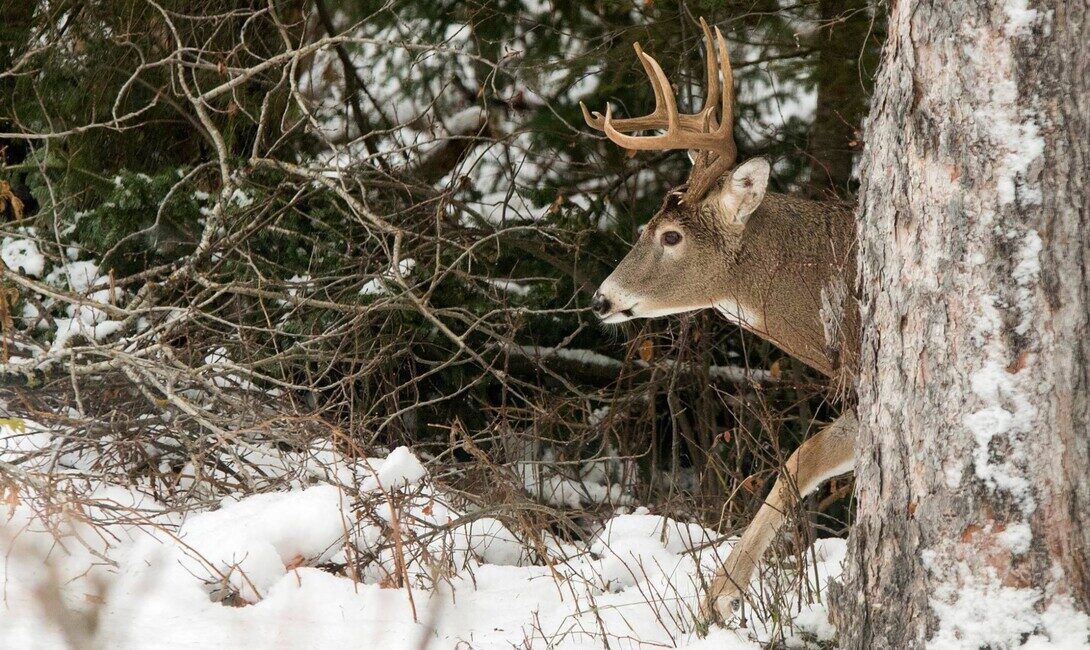
Post Rut Whitetail Behavior
After the rut (breeding season), the lifestyle of whitetail deer undergoes several changes as they transition into the post-rut period. Here are some key aspects of the whitetail deer lifestyle during this time:
- Energy Conservation:
- The rut is a physically demanding period for bucks, as they engage in territorial disputes and mate-chasing. After the rut, bucks focus on conserving energy to recover from the exertion.
- Social Dynamics:
- Bucks, which may have been more solitary during the rut, may begin to form bachelor groups again. These groups consist of males of various ages that spend time together in a less aggressive and more social manner.
- Feeding and Recovery:
- Deer, especially bucks, prioritize replenishing their energy reserves through feeding. They focus on high-quality forage to recover from the rut’s physical toll.
- Winter Preparation:
- As winter approaches, deer start preparing for the colder months by foraging for food that provides essential nutrients and building up fat reserves. This is crucial for surviving the challenges of winter.
- Shedding Antlers:
- In many regions, the post-rut period is when bucks shed their antlers. This usually occurs as testosterone levels decrease after the rut, leading to the weakening of the connection between the antlers and the pedicles.
- Reproductive Rest:
- Does, having undergone the breeding season, experience a post-rut recovery period. They focus on foraging and preparing for the winter months.
- Territory Changes:
- The territorial behavior exhibited during the rut diminishes. Bucks are less aggressive, and the intensity of marking and defending territories decreases.
- Shift in Movement Patterns:
- Deer movement patterns may change as they adjust to the availability of food, changing weather conditions, and human disturbances. They may become more nocturnal and seek secure bedding areas during the day.
- Sensory Awareness:
- Deer remain vigilant and rely on their acute senses to detect predators and potential threats. While they may not be as focused on mating activities, their survival instincts remain sharp.
- Flocking Behavior:
- As winter progresses, deer may exhibit flocking behavior, especially during harsh weather conditions. This behavior provides some protection against predators and helps them conserve energy.
Understanding these post-rut behaviors is valuable for hunters, wildlife enthusiasts, and conservationists, as it provides insights into the natural rhythms of whitetail deer and helps in managing and conserving their populations.

0 Comments